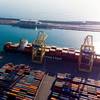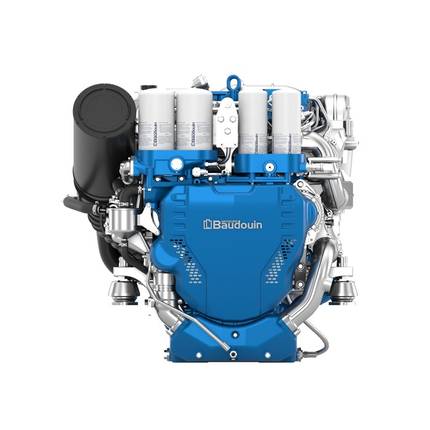Proposed China Vessel Fees Come with Supply Chain Risks
Analysts caution that a new proposal to impose fees on China-built container ships entering the U.S. could trigger unintended consequences, including port congestion, rising freight costs, and shifts in global trade flows.
The Trump administration has announced a plan to charge a $1 million fee every time a vessel operated by a Chinese carrier docks at a U.S. port. Additionally, the Federal Notice outlines potential extra charges for any China-built ships, even if operated by carriers from other nations. A third provision suggests an additional fee based on the percentage of new ships a carrier has on order from Chinese shipyards.
Peter Sand, Chief Analyst at Xeneta, a freight intelligence platform, warned that carriers will likely adjust their operations to sidestep these fees, potentially leading to major disruptions. "Ocean container carriers will try to avoid the charges by making fewer port calls, which could create serious congestion and delays at U.S. ports," Sand explained.
He pointed to a similar scenario in 2023 when ocean carriers reduced port visits in Asia and consolidated shipments in Singapore to counter disruptions caused by the Red Sea crisis. While intended to streamline operations, the shift overloaded Singapore's port, causing global ripple effects and pushing freight rates from the Far East to the U.S. East Coast up by over 300%.
"Trump is using trade as a weapon against China, but there’s a real question of whether the administration fully grasps the consequences. This policy carries a high risk of backfiring—making shipping more complex and expensive for U.S. importers."
With direct U.S. imports facing new fees, Mexico and Canada may become even more critical gateways for Chinese goods, a trend that has already been gaining momentum.
Chinese imports into Mexico surged 15% year-over-year in 2024, reaching 1.42 million TEU (20-foot equivalent units). Canada’s imports from China saw a 16% increase, climbing to 1.8 million TEU. Sand noted that shippers have been using Mexico and Canada as alternative routes to bypass U.S. tariffs on Chinese goods. However, Trump has pledged to curb this practice by introducing 25% tariffs on imports from both countries, making them a less attractive workaround.
"If U.S. importers now face port fees on top of tariffs, they might seek even more alternatives—potentially leading to a further surge in shipments through Mexico and Canada, the very thing Trump is trying to prevent," Sand said. "We could even see an increase in air freight as companies look for faster ways to bring goods into the U.S."
Which Carriers Will Be Hit the Hardest?
Data from Xeneta indicates that COSCO, the only Chinese carrier in the global top 10, will bear the brunt of these fees. Nearly two-thirds of its fleet is China-built, and a staggering 90% of its orderbook consists of ships under construction at Chinese yards.
Other major carriers are in a better position to mitigate the impact. No other top 10 carrier has more than 50% of its fleet built in China, giving them greater flexibility to reallocate ships and adjust routes. However, leading European carriers, including MSC, Maersk, CMA CGM, and Hapag-Lloyd, could also be affected, as over half of their new vessel orders are coming from Chinese shipyards.
"The consequences of these policies are difficult to predict, but one thing is clear—U.S. importers and carriers will face a challenging road ahead."















